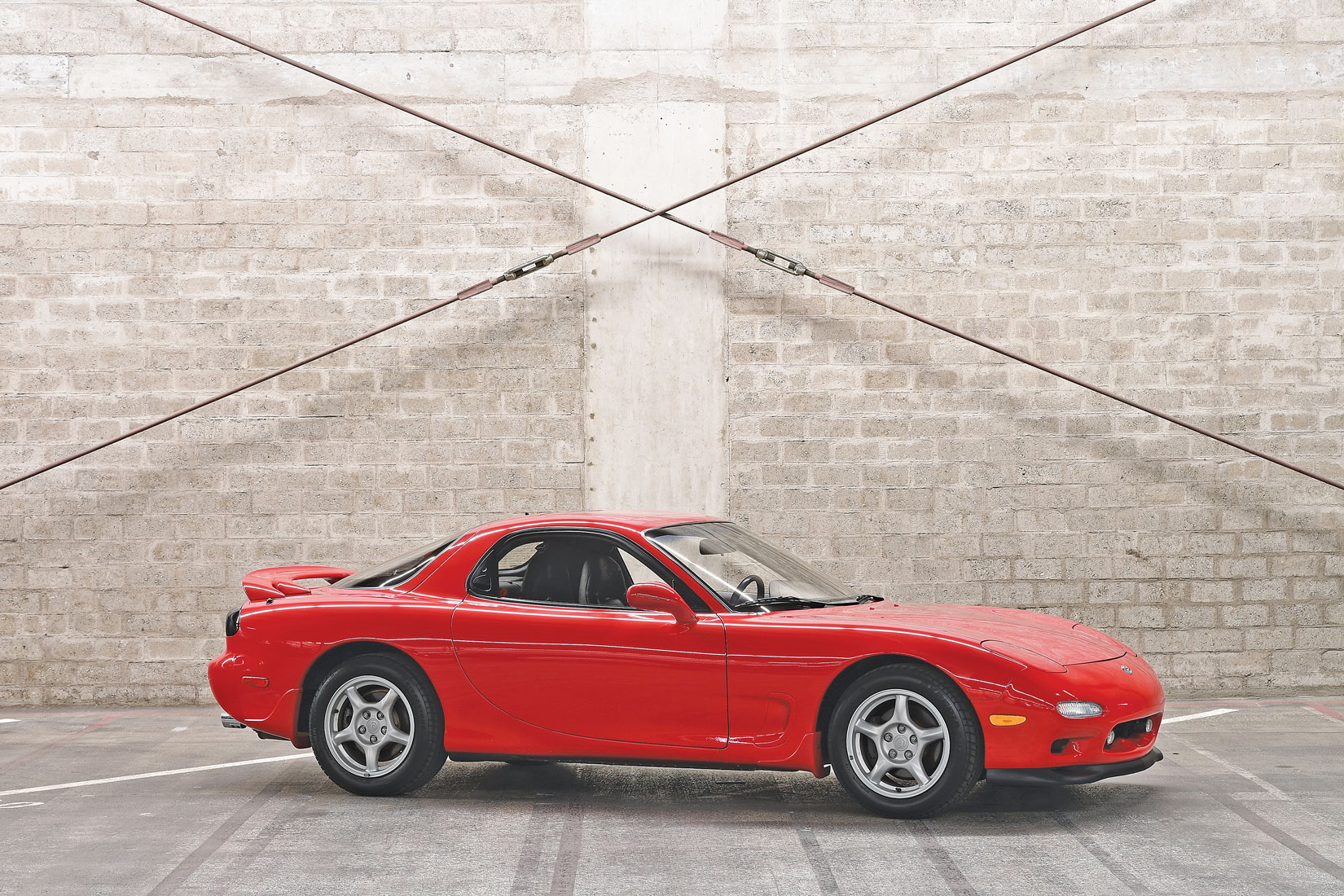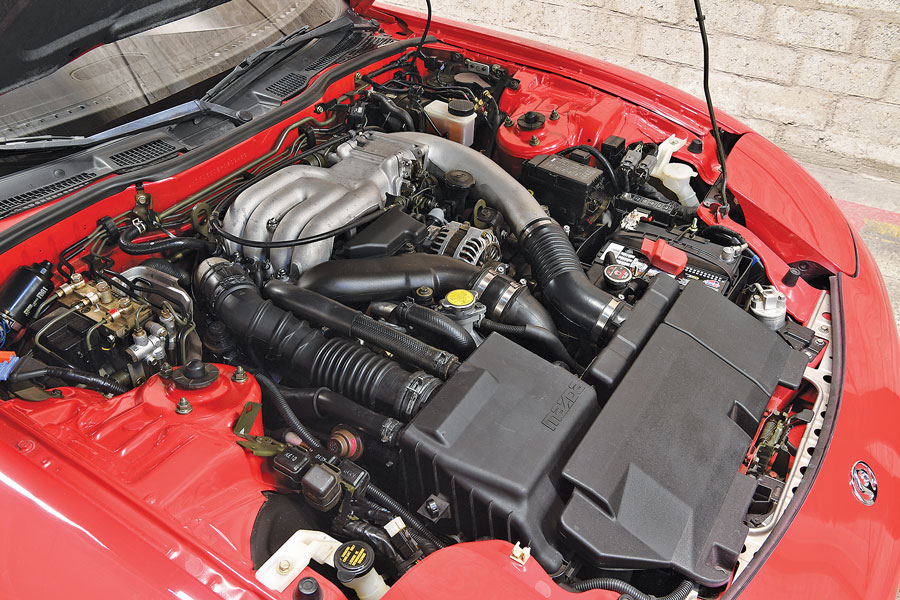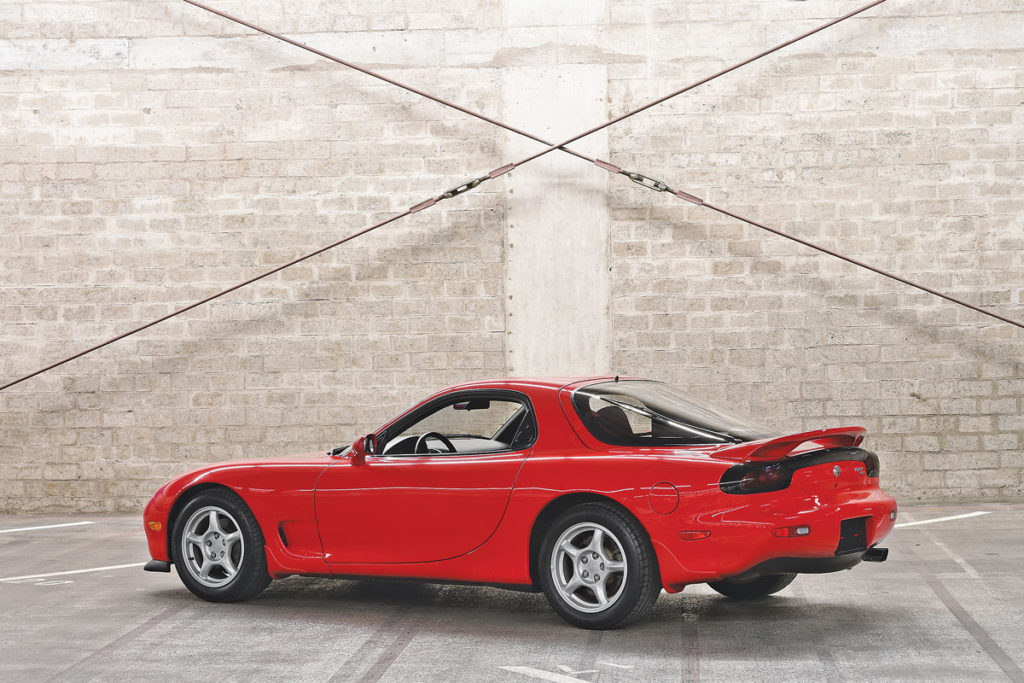
Mazda’s FD3S third-generation RX-7 is hot in so many ways. First, it’s in demand. You can count on one hand the number of these cars that have sold for less than $30k on Bring a Trailer since 2020 — with the best reaching $80k. So, as affordable classics go, the FD comes with a pretty big asterisk. But it’s still worth seeking out as one of the best sports cars of all-time. Compared with its contemporary Toyota Supra — now a six-figure collectible — the RX-7 can look like a bargain.
Peak Mazda
Sold in the U.S. for only three model years (1993–95), the FD RX-7 is seen as the pinnacle of Mazda’s sports cars by many enthusiasts. It was light, powerful, communicative, perfectly sized and subtly beautiful. It was also a victim of its own complexity and cost. Sales were awful. So much so that Mazda quickly pulled the plug in the U.S., even as the car remained in production for the Japanese market until 2002.
A big part of that complexity was the sequentially twin-turbocharged 1.3-liter rotary engine (13B-REW) under its hood. Boosted to make 255 hp and 217 lb-ft of torque, the little Wankel delivered a deeply engaging monotone blat that pulverized its rear tires (and the occasional apex seal) all the way to its 7,500-rpm redline. A sharp-shifting 5-speed manual or fun-hating 4-speed automatic transmission were available.
Mazda took what it learned from developing the MX-5 Miata’s responsiveness and handling and evolved it into an elegant coupe body that added the rigidity of a closed roof to the structure. With a 95.5-inch wheelbase, the RX-7 packed about six inches more car between its wheel centers than a first-gen Miata. Yet the RX-7 still weighed only 2,850 pounds — about 700 pounds less than such competitors as the Z32-series Nissan 300ZX Twin Turbo.

A driver’s car, bar none
Like the MX-5, it used Mazda’s powerplant frame — a brace between the back of the transmission and the rear differential — to produce a sharper driving experience. The powerplant frame reduces wind-up in the drivetrain and translates every jab at the throttle into immediate thrust. Double wishbones up front and a multi-link rear suspension gave it a proper platform for the sharpness it needed to deliver.
And deliver it did. The FD RX-7 was Motor Trend’s Import Car of the Year in 1993 and made Car and Driver’s 10Best list every year it was on sale. Critics could find little to complain about save for a busy ride or the tight cockpit. But many colorful metaphors were unleashed whenever auto scribes tried to put the FD’s otherworldly driving experience into words. This is a serious sports car — sharp, quick (0–60 mph in 5.0 seconds), and not for beginners. Find one that’s functional enough to drive hard and it remains so even by today’s standards.

Know before you go
Three trims (base, Touring, and the hard-core R1) were available at launch, though that was reduced to only two by 1995. Today, trim is relatively irrelevant in a purchase decision, though unmolested R1s will command a premium. Find the most mechanically sound FD you can and hire someone who knows these cars well to perform an in-depth PPI. Budget extra anyway.
FDs are not known for metronomic reliability. Just the opposite, in fact. Not only are they old, but rotaries — especially turbocharged rotaries — make a lot of heat. So anything under an FD’s hood that was once made of pliable plastic or rubber is now made of brittle, touch-me-and-I’ll-crumble material.
Combine the heat with low-octane American gasoline and ’90s engine controls, and many FD engines were lost to detonation, which destroys their apex seals.
The engine is increasingly heat sensitive with age and use. The O-rings that create the seal between the iron and aluminum rotor housings fail. This sets off a series of predictable events: They become hard to start or they make white smoke when they do run. Like in a piston engine, this failure will pressurize the cooling system. Be aware that there’s a nest of vacuum lines managing the turbochargers’ operation, boost and emissions controls. They all fail with age.
But these are all fixable problems, and they’re risks that an ever-increasing number of nostalgic enthusiasts are willing to take. If you’re among them, perhaps the best approach is to think of the FD RX-7 with a wear factor double that of its actual mileage. Using that equation, a 50,000-mile FD might be considered with the same caution as a 100,000-mile piston-powered sports car of the same era. Except that it’s more fun to drive than all of them. ♦